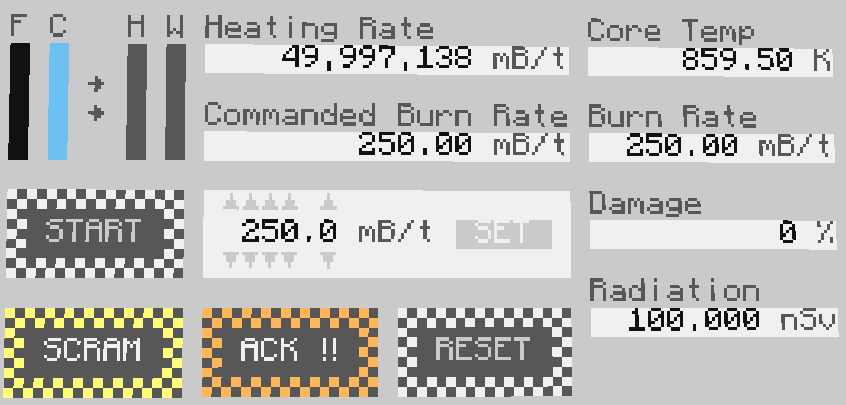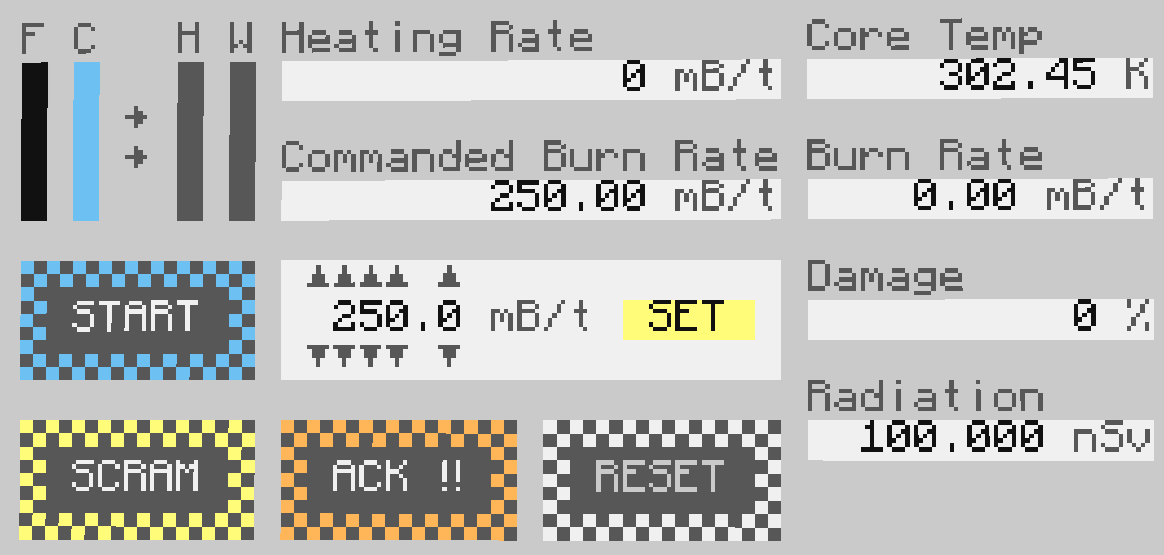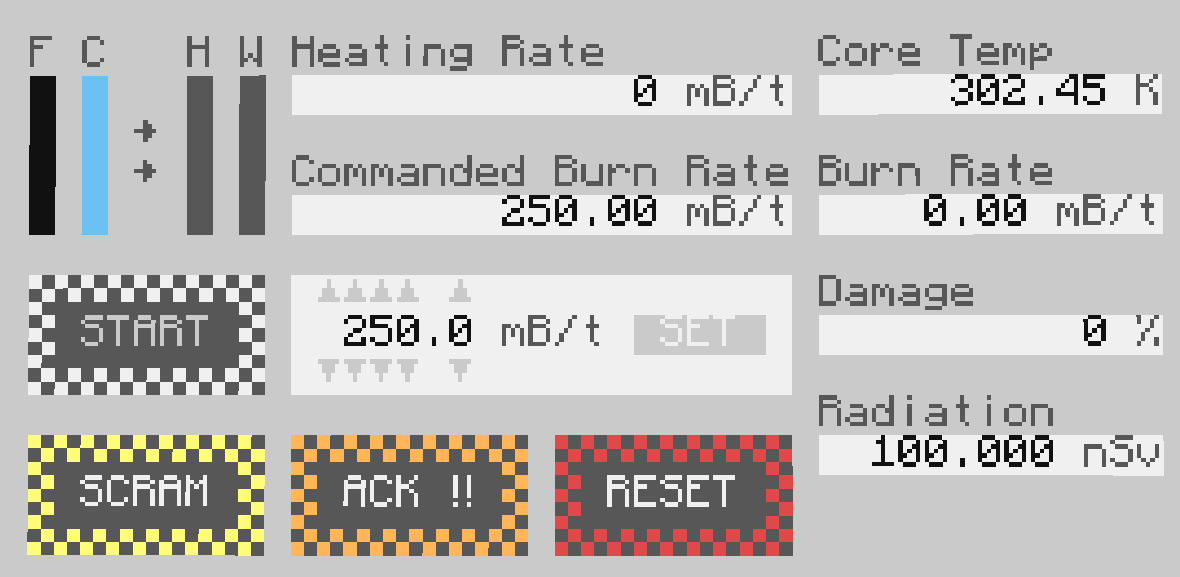-
-
Notifications
You must be signed in to change notification settings - Fork 24
Operating Procedure
Most of the operation should be straight-forward, but here you will find the details.

The auto mode selection defines how you will use the system. "Manual" mode puts the reactor into independent, manual operation. This allows use of the START button and allows manual control of the burn rate.
Any mode besides "Manual" locks out use of the START button and burn rate control.
After "Manual" mode, there are four options that all put the unit under control of the automatic process control system. These four options define what priority group this unit resides in.
- Primary - used first
- Secondary - used second
- Tertiary - used third
- Backup - used last (Quaternary was too long of a word to fit)
The system tries to only use the highest priority reactors, but if those have insufficient available burn rate capacity, then it starts using the next lower priority group. Within one group, burn rates are split evenly among reactors in that same group.
Here we'll use an example facility with four reactors with the following burn rate limits: #1 = 250, #2 = 150, #3 = 180, #4 = 350
Units #1 and #2 are set to Primary, unit #3 as Secondary, and unit #4 could be either Tertiary or Backup, it won't matter for this example.
If the system wants a burn rate of 150, then units #1 and #2 both get assigned 75. If it wants 300, then units #1 and #2 both get assigned 150. For 350, units #1 and #2 get assigned 200 and 150 respectively.
At 450, then units #1 and #2 are both running at their limits and the remaining 50 gets assigned to unit #3. After that hits its limit at 580, additional allocation would go to unit #4.
The Prio. Group shows the acknowledged, current control group that the unit is in. The actual mode selection radio options don't reflect the current state, just which was last pressed by the operator, which is why this text indicator is included.
For automatic mode, there is a Ready indicator indicating if the unit is ready for automatic control. This requires that the RPS is not tripped and that all build and status data has been received from the reactor and all the boilers and turbines that are configured for that unit. No RTUs can be faulted (or the PLC, but that's an RPS trip) and all multiblocks must be formed.
The Standby indicator indicates that the reactor is part of automatic control that is currently running, but the reactor is currently disabled due to not being needed at that moment in time.

This panel displays and allows acknowledging or resetting the reactor unit alarms. For more details, see the alarms page.
Both the unit view and facility view have an ACK button that will acknowledge all alarms for the unit or facility respectively. While in manual operation, no actions will be taken automatically based on alarms. While in auto mode, high priority alarms will cause an automatic RPS trip (SCRAM) of that reactor unit.
There are 4 main button controls in addition to the burn rate spinbox control. This allows for basic "on/off" functionality, with the ability to set the burn rate before and during operation. Note that the operator has the ability to provide a rate with 1/10ths of decimal precision, but the automatic control utilizes 1/100ths of decimal precision.

While the reactor auto control mode is set to "Manual", the burn rate can be changed via the up/down arrows. The rate is not set until the SET button is pressed. If this succeeds, you will see the "Commanded Burn Rate" show the new rate. If the reactor is active, the "Burn Rate" should also show this rate.

Reactor is ready to start
The RPS is tripped via either manual SCRAM with the SCRAM button or a detected safety issue. Before starting, the RPS needs to be reset using the red RESET button. If the hazard condition is still present, it will trip again. While it is tripped, the START button will be disabled. Once everything is all set and the reactor auto control mode is set to "Manual", then the START button will be enabled, turning blue. Once started, that button will again be disabled.

Reactor has been started
NOTE THAT THIS IMAGE IS FOR AUTO MODE, GET A NEW IMAGE
To stop the reactor manually, press the SCRAM button. This will trip the RPS, stopping reactor operation. The "Manual Reactor SCRAM" indicator will light up on the reactor annunciator panel.

Reactor has been SCRAM'd
If you need help beyond this wiki, open a support discussion or ask on Discord! If you prefer videos, they can be found on my YouTube channel.
- User Manual
- Computer Applications
- Notable System Components
- Notes
- Investigations
- References & Resources
- Legacy